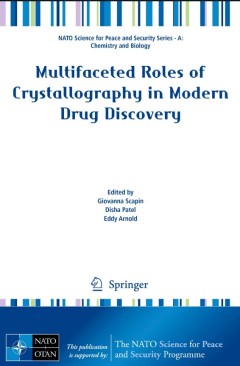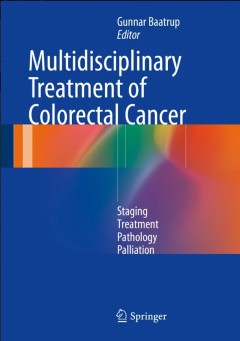Filter by

Between Violence, Vulnerability, Resilience and Resistance: Arab Television N…
How are the structures of power and the notion of agency among Syrian women during the recent Syrian conflict connected? To explore this matter, Rand El Zein investigates gender politics around displacement, conflict, the body, and the nation. In doing so, she outstandingly reconciles critical media theory as myriad and productive with the theoretical concepts on subjectivity, power, performati…
- Edition
- -
- ISBN/ISSN
- 9783839459591
- Collation
- -
- Series Title
- -
- Call Number
- 300 ZEI b

https://openresearchlibrary.org/content/d6ddf831-9ca9-46b0-9c43-1820c069ba9
In recent political and constitutional history, scholars seldom specify how and why they use the concept of territory. In research on state formation processes and nation building, for instance, the term mostly designates an enclosed geographical area ruled by a central government. Inspired by ideas from political geographers, this book explores the layered and constantly changing meanings of t…
- Edition
- -
- ISBN/ISSN
- -
- Collation
- -
- Series Title
- -
- Call Number
- -

Academics in Exile: Networks, Knowledge Exchange and New Forms of Internation…
Restrictions on academic freedom, persecution and armed conflict have forced many scholars into exile. So far, the professional trajectories of these scholars and their contributions to knowledge exchange have not been studied comprehensively. The contributors to this volume address the situations and networks of scholars in exile, the challenges they face in their host countries and the opport…
- Edition
- -
- ISBN/ISSN
- 9783839460894
- Collation
- -
- Series Title
- -
- Call Number
- 300 ACA a

Multifaceted Roles of Crystallography in Modern Drug Discovery
The present work offers a snapshot of the state-of-the-art of crystallographic, analytical, and computational methods used in modern drug design and development. Topics discussed include: drug design against complex systems (membrane proteins, cell surface receptors, epigenetic targets, and ribosomes); modulation of protein-protein interactions; the impact of small molecule structures in drug d…
- Edition
- 1
- ISBN/ISSN
- 978-94-017-9718-4
- Collation
- XI, 240
- Series Title
- NATO Science for Peace and Security Series A: Chemistry and Biology
- Call Number
- -

Multidisciplinary Treatment of Colorectal Cancer:Staging – Treatment – Pa…
This book is intended as the equivalent of the Swiss Army knife for all members of colorectal cancer (CRC) multidisciplinary teams and those training in the fields of CRC management. It describes how to organize the team and explains the basic principles within the different disciplines involved in the treatment and care of CRC patients. Important, up-to-date knowledge is provided on visualizat…
- Edition
- 1
- ISBN/ISSN
- 978-3-319-35716-4
- Collation
- XVII, 289
- Series Title
- -
- Call Number
- -

The Vertebrate Integument Volume 2 Structure, Design and Function
The emphasis in this volume is on the structure and functional design of the integument. The book starts with a brief introduction to some basic principles of physics (mechanics) including Newton’s Three Laws of Motion. These principles are subsequently used to interpret the problems animals encounter in motion. It is in only the last 40 or so years that we have begun to understand how imp…
- Edition
- -
- ISBN/ISSN
- 978-3-662-46005-4
- Collation
- -
- Series Title
- -
- Call Number
- -

Multimedia Signals and Systems
This book is designed for students, professionals and researchers in the field of multimedia and related fields with a need to learn the basics of multimedia systems and signal processing. Emphasis is given to the analysis and processing of multimedia signals (audio, images, and video). Detailed insight into the most relevant mathematical apparatus and transformations used in multimedia signal …
- Edition
- 1
- ISBN/ISSN
- 978-3-319-23948-4
- Collation
- XXVIII, 391
- Series Title
- -
- Call Number
- -

The Vertebrate Blood-Gas Barrier in Health and Disease Structure, Developmen…
This comprehensive volume on the blood-gas barrier (BGB) among vertebrates covers its structure and composition along with aspects of evolution, bioengineering, and morphometry. The book also discusses the embryological development of the BGB, including chronology of events and molecular control in vertebrates; modulation of the barrier function, including cyclic stretch-induced increases in al…
- Edition
- -
- ISBN/ISSN
- 978-3-319-18392-3
- Collation
- -
- Series Title
- -
- Call Number
- -

Social Science Research: Principles, Methods, and Practices
This book is designed to introduce doctoral and graduate students to the process of scientific research in the social sciences, business, education, public health, and related disciplines. It is a one-stop, comprehensive, and compact source for foundational concepts in behavioral research, and can serve as a stand-alone text or as a supplement to research readings in any course on research meth…
- Edition
- -
- ISBN/ISSN
- -
- Collation
- -
- Series Title
- -
- Call Number
- 300.7 BHA s

Multidisciplinary Systems Engineering:Architecting the Design Process
This book presents Systems Engineering from a modern, multidisciplinary engineering approach, providing the understanding that all aspects of systems design, systems, software, test, security, maintenance and the full life-cycle must be factored in to any large-scale system design; up front, not factored in later. It lays out a step-by-step approach to systems-of-systems architectural design, d…
- Edition
- 1
- ISBN/ISSN
- 978-3-319-22397-1
- Collation
- XXIII, 297
- Series Title
- -
- Call Number
- -
 Computer Science, Information & General Works
Computer Science, Information & General Works  Philosophy & Psychology
Philosophy & Psychology  Religion
Religion  Social Sciences
Social Sciences  Language
Language  Pure Science
Pure Science  Applied Sciences
Applied Sciences  Art & Recreation
Art & Recreation  Literature
Literature  History & Geography
History & Geography